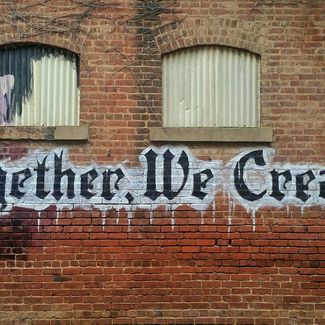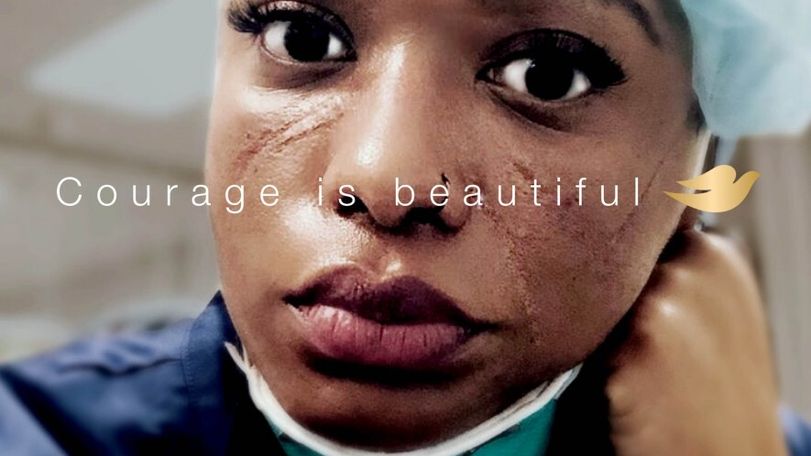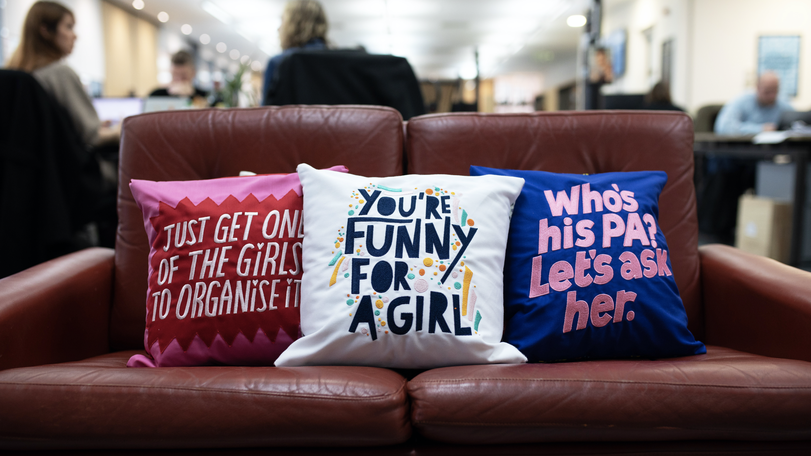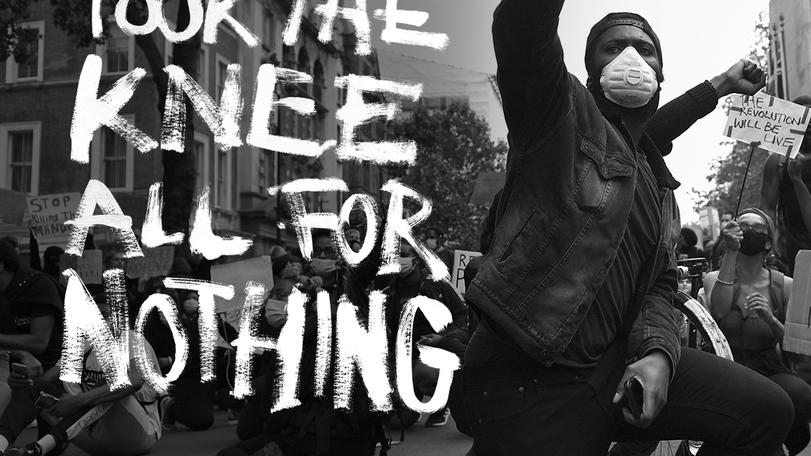
Advertising's altruism
How driving societal change has become a key ambition for creative companies
31 August 2021
Harnessing creativity to make a positive change in society and the world around us is nothing new, but it's increasingly becoming more than just a spare-time activity for some of the world's most successful creatives and creative companies.
Former Apple design chief Sir Jony Ive has just joined forces with Prince Charles to launch the Terra Carta Design Lab, which will encourage students at London’s Royal College of Art to “create small designs” that can make a big impact in addressing climate change. Ive explained that “often the biggest challenges demand the most ingenious, most creative thinking”.
Closer to home, that spirit also underpins the new IPA “Accelerate Opportunity” agenda under president Julian Douglas, which identifies Covid as providing “an inflection point, a discontinuous moment to change things, an opportunity to press re-set on a whole range of issues far beyond advertising." Involvement in solving broader societal problems has the potential, the IPA says, to “show the world what advertising’s brightest thinkers are capable of through creativity, ideas and their skills in engagement and persuasion.”
Sarah Jenkins, managing director at Saatchi & Saatchi, believes that this is an important message: “It's insanity not to involve the ad industry in these issues. You have a literal army of creative talent - thinkers, fixers, creators and doers. It is absolutely achievable, the door just needs to be opened to us.
“The NHS are utterly brilliant for delivering the vaccine roll out and we are all beyond lucky to have them. But I reckon, if you'd given the ad industry the test and trace brief, we could have done that with some serious effectiveness. And without the £37 billion bill.”
Advertising’s intent to address some big issues was clear throughout the early stages of the Covid crisis. For instance, St Luke’s won plaudits with its ‘Stay Home Now’ work, which reversed the NHS logo to urge people to follow lockdown rules responsibly.
This mood was later translated into work for clients in campaigns such as the Ogilvy ‘Courage is Beautiful’ campaign for Dove, and Saatchi & Saatchi worked with its client Marie Curie, which was forced to cancel its biggest fundraiser, the Great Daffodil Appeal, due to Covid. Jenkins says: “With our backs firmly up against the wall, we managed to pull off an emergency campaign within 10 days, which helped raise £1.3 million of desperately needed funds in four weeks, and went on to deliver £7 million in total.” More recently, adam&eveDDB’s involvement in the #WeThe15 movement to support people living with disabilities on a global scale has already made a profound impact.
And there are plenty of smaller-scale projects instigated by ad creatives too. Laura Muse, creative director at VCCP, has been involved in several purpose-based projects in recent times. Notably, activity around International Women’s Day in 2020 that embraced her interest in embroidery to create a range of cushions that were distributed around the agency bearing messages including “You’re funny for a girl” and “Who’s his PA? Let’s ask her.”
Muse says that the project, which was inspired by meetings of the VCCP Diversity & Inclusion collective, is reflective of her work “trying to help women succeed in the industry and broader society”. She says that having a strong commitment to the cause is essential when using creativity to address these issues: “Advertising does have a really good history of making positive change, and I think where the people that make the work have a genuine understanding of the problem that’s where the best work comes from, if they really believe in the cause.”
Steve Aldridge, the chief creative officer at Wunderman Thompson, is also convinced of creativity’s power but he says that there are limits: “Let’s not live under some misapprehension that we work in advertising and we’re going to solve all the world’s problems, because I think that would be arrogant. But we can use our skills to highlight issues, channel people in the right way and, through fully integrated communications, give them the tools to help whether it’s dealing with domestic abuse or climate change.”
Wunderman Thompson has applied this approach on several projects, including work for Tommy Hilfiger on inclusive design for people with disabilities, and HSBC’s partnership with Shelter to combat homelessness, which won two Gold Lions at Cannes this year. It also worked with BT Sport and Greene King to encourage greater inclusivity by redesigning pub spaces to provide a more welcoming space in which to enjoy broadcasts of women’s football: “That’s the joy of not being a slave to advertising and building something through an experience as well,” adds Aldridge.
Agency creatives are also focused on their own altruistic projects, not necessarily dictated by a brand. That was the case for Dan Cole and Andy Garnett, the Havas London creative directors who co-founded The Wayback, a virtual reality film series designed for people living with dementia and their carers. They harnessed their creativity to launch an easy-to-use method of triggering memories and sparking conversations.
This kind of thinking was also evident when Wunderman Thompson launched Fund Female, an online platform to promote businesses owned by women using its own network and people to generate a database and online portal. Aldridge says: “That’s about creating product and service but using our network and a lot of people that are connected – we can use our skills and our own networks to get it off the ground, that’s important.”
Saatchi & Saatchi has partnered with the non-profit Operation Black Vote on an appeal to encourage underrepresented communities to register to vote, and also supported the OA, a broader Publicis Groupe UK initiative, which helps young people from marginalised communities find jobs in the advertising industry. Sarah Jenkins explains: “It's an interactive platform, which offers an entry point for people keen to learn the fundamentals of the industry, understand the types of role on offer and the career opportunities available. That's when the partnership, collaboration and scale we have can have a transformational impact on the culture of our industry.”
The theme of passion and believing in the project is taken up once again by VCCP’s Laura Muse, who also worked to produce a video series “Not Alone”, featuring people at the agency talking about facing mental health issues. She’s looking to update this with a new series focusing on the workplace: “There’s a sense sometimes that you can’t bring your whole self to work, that there’s a bit you have to hide, and that’s what I’d like to address with the second batch of films – people opening up more about the things that maybe they’ve kept hidden from the people they’ve worked with. It would be so much better for us as an industry if people are able to say ‘I’m this’, or ‘I’m interested in this, I do this’, then people will feel able to be themselves.”
When it comes down to fundamentals, Sarah Jenkins at Saatchi & Saatchi believes that there’s a responsibility to help solve wider problems: “All businesses, all humans, have a moral obligation to do the right thing - for each other, and for the planet. And when you're working in a business where you have the ability to reach millions of people, at the touch of a button, you have an even bigger obligation. Because our creative ability means we are able to deliver disproportionally more impact.”
It’s clear, then, that advertising is capable of applying a strong sense purpose to make a greater positive impact on the world. The industry’s passion and creativity, combined with the power of its collective mindset and integrated thinking, mean that altruism and advertising are no longer such an odd couple.












